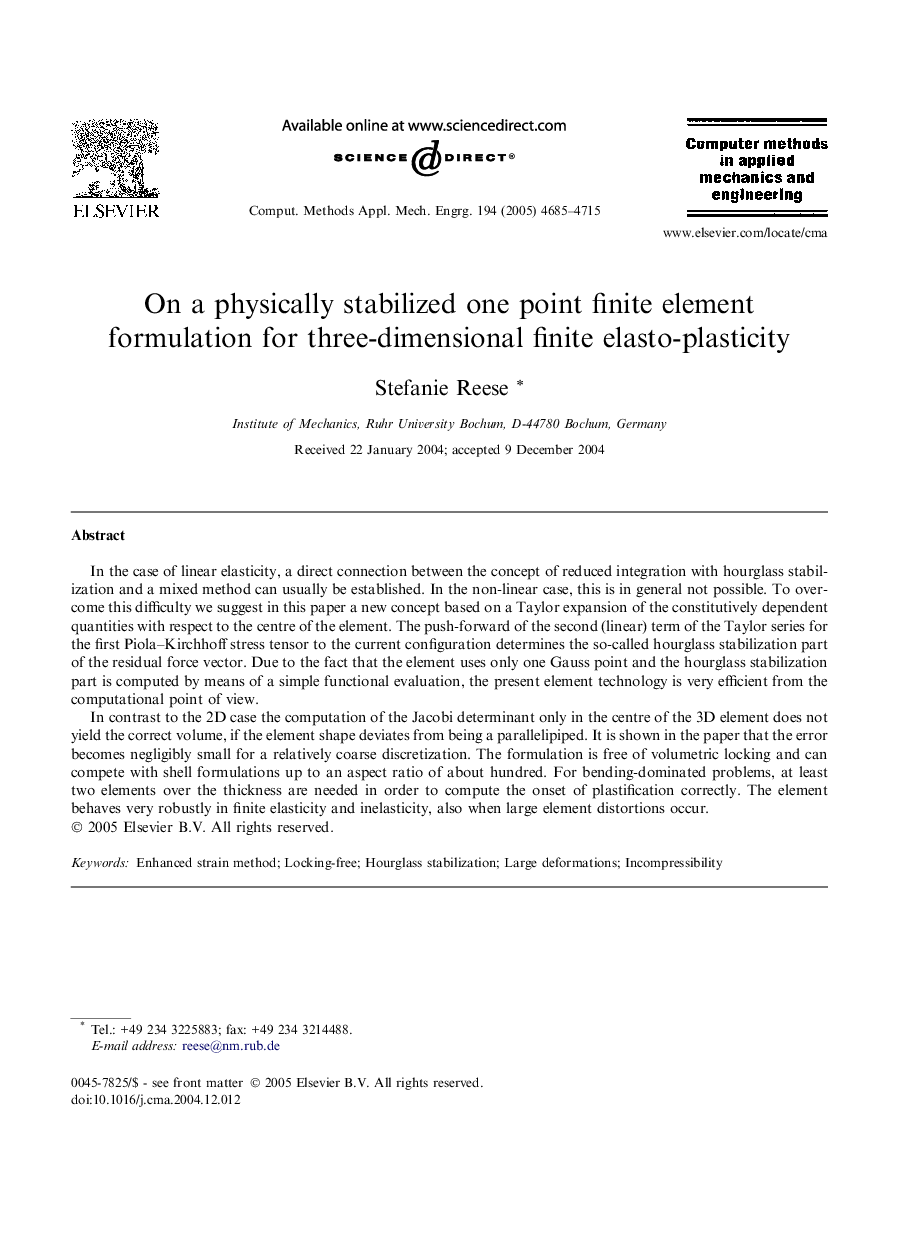| Article ID | Journal | Published Year | Pages | File Type |
|---|---|---|---|---|
| 500720 | Computer Methods in Applied Mechanics and Engineering | 2005 | 31 Pages |
In the case of linear elasticity, a direct connection between the concept of reduced integration with hourglass stabilization and a mixed method can usually be established. In the non-linear case, this is in general not possible. To overcome this difficulty we suggest in this paper a new concept based on a Taylor expansion of the constitutively dependent quantities with respect to the centre of the element. The push-forward of the second (linear) term of the Taylor series for the first Piola–Kirchhoff stress tensor to the current configuration determines the so-called hourglass stabilization part of the residual force vector. Due to the fact that the element uses only one Gauss point and the hourglass stabilization part is computed by means of a simple functional evaluation, the present element technology is very efficient from the computational point of view.In contrast to the 2D case the computation of the Jacobi determinant only in the centre of the 3D element does not yield the correct volume, if the element shape deviates from being a parallelipiped. It is shown in the paper that the error becomes negligibly small for a relatively coarse discretization. The formulation is free of volumetric locking and can compete with shell formulations up to an aspect ratio of about hundred. For bending-dominated problems, at least two elements over the thickness are needed in order to compute the onset of plastification correctly. The element behaves very robustly in finite elasticity and inelasticity, also when large element distortions occur.
